The Ultimate Road Trip On California Highway 1: SF to LA
Updated August 2023
This post is part of a series on travel close to home. You can find more posts from this series on my page Getaways Near Me (or You)
A road trip on California Highway 1 from San Francisco to Los Angeles is one where you want to take your time. You can do this drive in a day. It is about 500 miles. But much of this roadway is just two lanes. One lane going north and one lane going south. CA1 curves around the towns and the hills of the coastal range, frequently with a steep cliff drop by your side.
There are three main routes you can take to get from San Francisco to Los Angeles. The most popular is to drive Interstate 5. This route is popular because it is the fastest, most direct route between these two metropolitan areas. If speed is what you’re after, this is your drive. But I5 is the least scenic way to spend 6 to 7 hours of your life.
If you want something a little more enjoyable with a couple of fun places to stop, there is the meandering drive down U.S. Highway 101. Here, you’ll go through the coastal mountains, small towns, agriculture (think wine tasting), and some of those great Pacific coast views. The 101 takes about 2-3 hours longer than I5, depending on how often you stop, but you still get to LA in a day.
The Best Places To Stop Along California Highway 1
But maybe the most spectacular California road trip you can take is following the Pacific coast on California Highway 1 (CA 1) from the Golden Gate Bridge in San Francisco to Huntington Beach in Los Angeles.
Most recently, we made this drive in three days. We started in San Francisco and definitely took our time, splitting the drive time equally over the three days. Here is the itinerary we followed and suggestions for things to do and see, where to eat, and where to stay.
This article may contain affiliate links. We may earn a commission if you use these links to buy products or services. Please see our disclosure policy for full details. Thanks.
Driving CA 1 in a day may leave you exhausted. And you will miss seeing a lot of the incredible scenery, tiny coastal towns, forests of redwood trees, beautiful state parks, and so much more. Give yourself two to three days or, even better, five. Taking more time on this drive will allow you to enjoy this part of the Pacific Coast in all its splendor.
Day 1: San Francisco To Carmel-By-The-Sea 165 Miles
Heading south out of SF, you most likely won’t be stopping for a while. But if you were on the northbound route, you might want to stop before you get to SF and enjoy this northern part of the coast.
The Morning Drive – San Francisco to Santa Cruz
Leaving San Francisco, you pass through Pacifica, Montara, and Moss Beach before reaching Princeton by the Sea and Pillar Point. This is a pretty sleepy area most of the year. There is a lovely harbor at Princeton that has crab and fishing boats and whale-watching tours.
All along Highway 1, nearly year-round, you will find cars pulled over and surfers coming in and out of the water. Keep an eye out for pedestrians crossing the road with their surfboards. And when the waves get big, this place is home to the Mavericks Surfing Competition.
Halfmoon Bay is the biggest community on this part of the coast and the famous home of the Halfmoon Bay Pumpkin Festival every year. This town is crazy crowded in October! Main Street is a picture-perfect 19th-century shopping, with perfectly preserved buildings and tree-lined sidewalks.
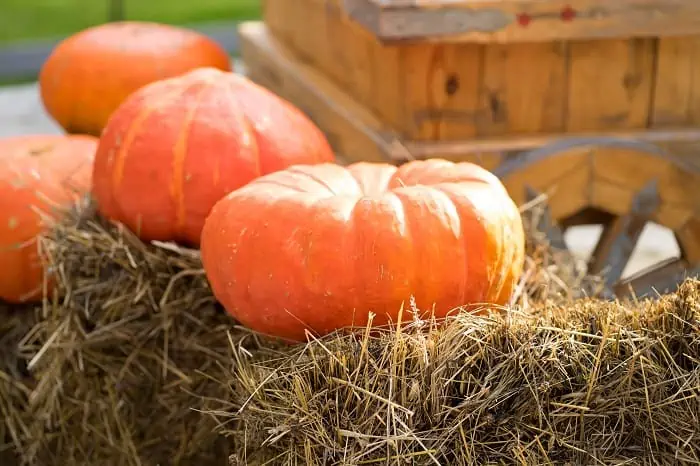
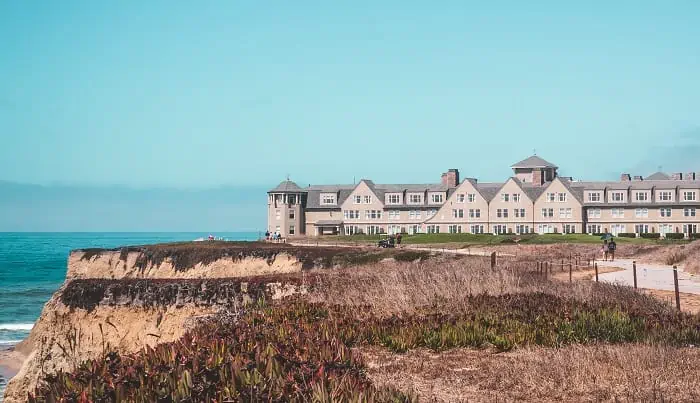
If you are driving northbound and this is near the end of your trip, consider a stay at the Ritz-Carlton, Halfmoon Bay. You can indulge in the hotel’s spa for a massage to rub out all your stiff joints from the drive.
Heading south out of Halfmoon Bay, you drive along the coast and have the opportunity to stop and beach comb on terrific beaches that line the highway. San Gregorio State Beach, Pomponio State Beach, Pescadero State Beach, and Bean Hollow State Beach seem to flow by in a chain.
Closer to Santa Cruz, you have your first chance to gaze at Elephant Seals at Ano Nuevo State Park. You need a reservation in advance from December to March and can only do guided walks with the Park Ranger to see the seals. But from April – November, you can take a self-guided, 3 – 4 mile moderate hike in the park so you can see the seals “spur of the moment.”
You will have another chance to see Elephant Seals south of Big Sur, but Ano Neuvo is the only place I know where you can walk on the beach with the seals.
Santa Cruz to Carmel – The Afternoon
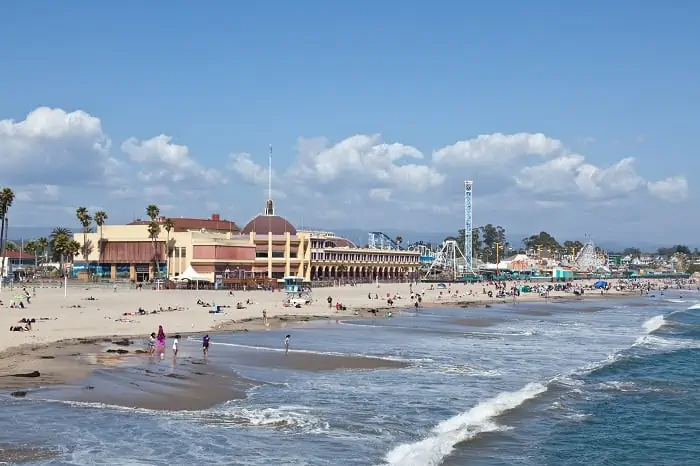
This is the meaty part of the north end of the road trip with lots of things to do. You can spend the afternoon on the boardwalk in Santa Cruz, enjoying the amusement park and sunning on the beach.
A bit further along California Highway 1, Stop in Monterey and tour the fantastic Monterey Bay Aquarium. (We love the aquarium so much we are annual members.) The Sardines absolutely mesmerize me.
Don’t forget to visit the sea otters both inside the aquarium and outside in the tide pools. After your visit to see the fishes, you can walk down Cannery Row to Fisherman’s Wharf and grab a bite to eat.
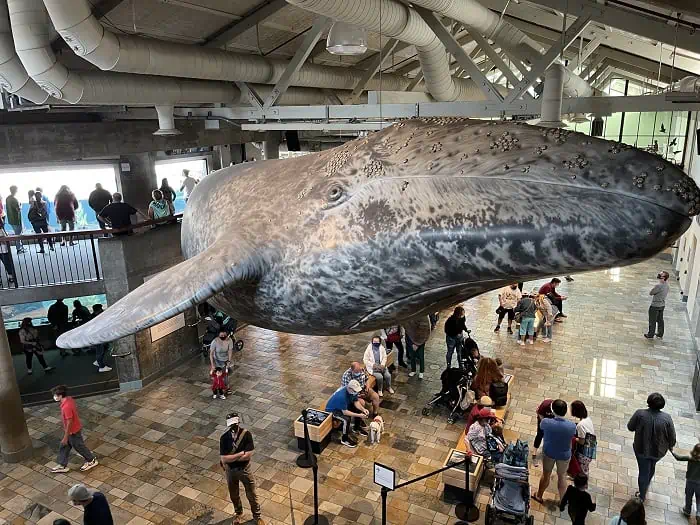
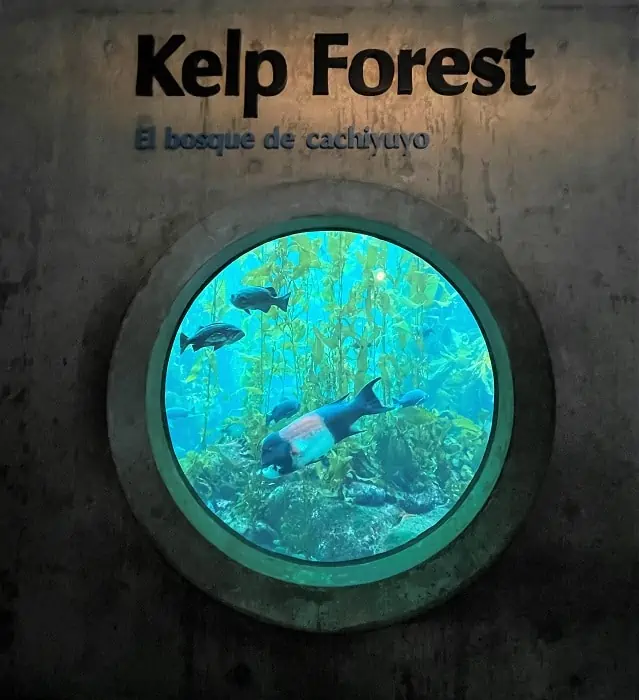
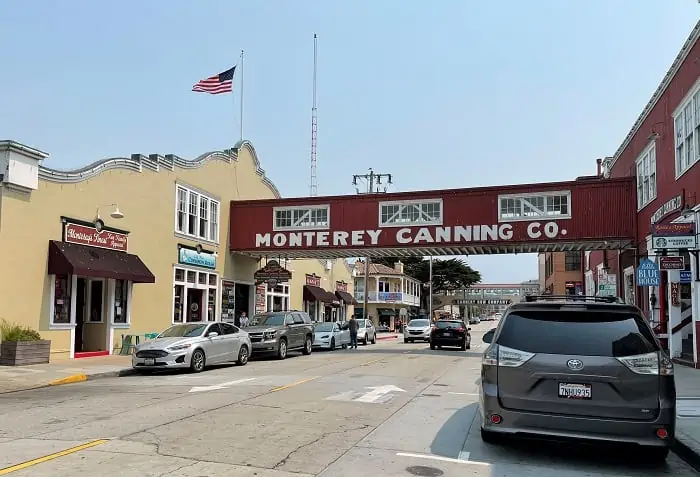
The Monterey Peninsula offers even more dramatic ocean views. From Monterey, it’s just a short drive to visit Point Pinos Light House in Pacific Grove, the oldest continuously operating lighthouse on the west coast of the United States. Take a few minutes to visit this national historic landmark.
Take the renowned “17-Mile Drive” and see Pebble Beach (if you like to golf) and the famous “Lone Cypress” that still hangs on to the cliffs above the sea. Visit one or more of the terrific wineries along Carmel Valley Road.
Next, head into Carmel-by-the-Sea and stroll along Ocean Avenue, peeking in the shops and galleries that line the way down to the ocean. This is a perfect place for your first night’s stop.
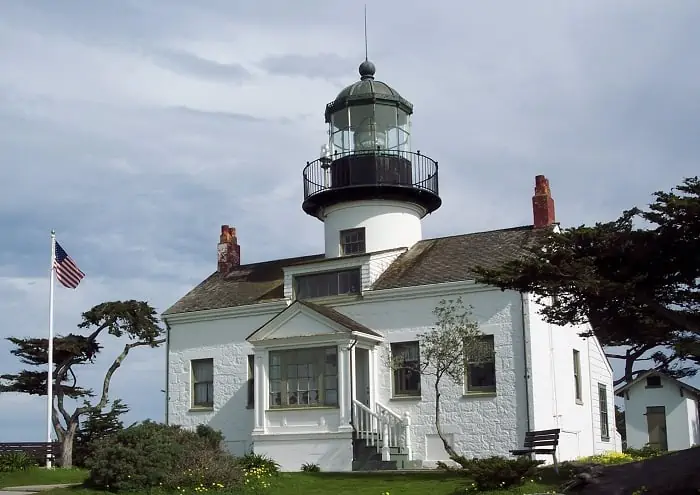
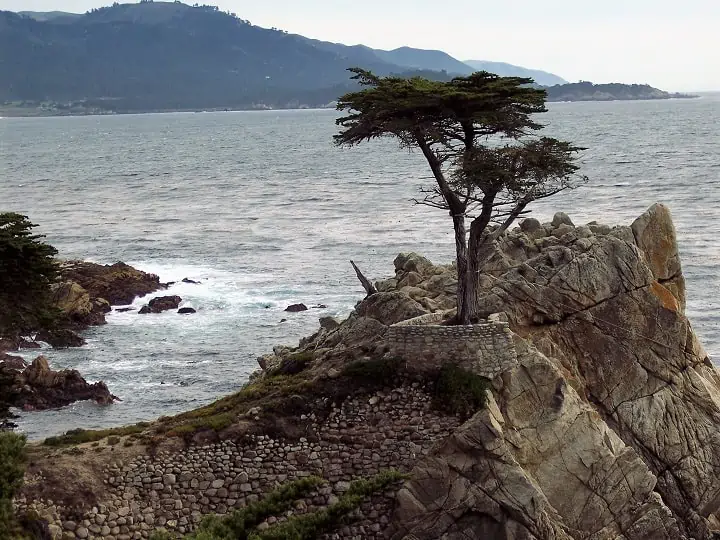
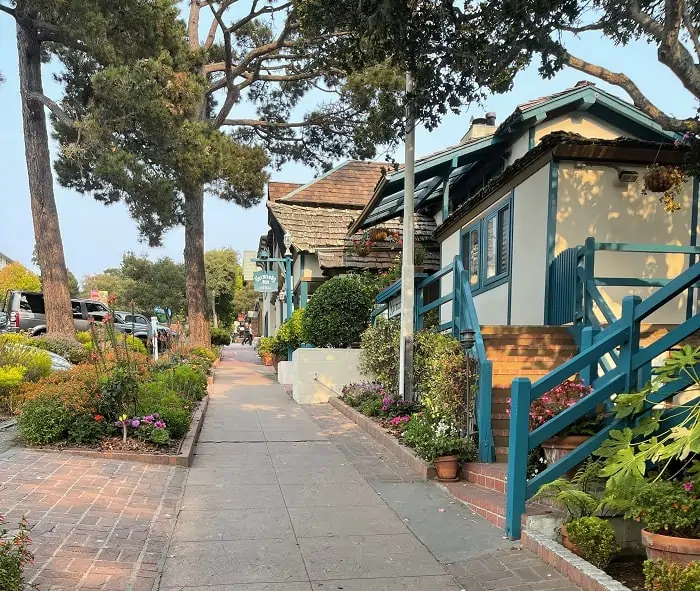
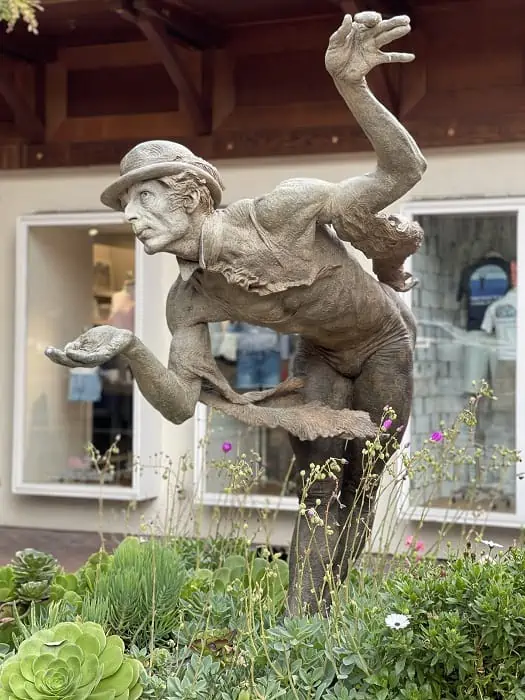
Staying the night in the Monterey/Carmel area is a treat. Yes, this is a pricey area, but some value-priced hotels are to be found on Booking.com. And you don’t want to miss out on your chance to eat at Monterey’s Fish House. This festive Italian-style fish house has some of the best seafood around.
One of my favorites is the Clams steamed in wine, butter, and garlic. These clams are so good I figured out how to make this dish at home. But go early or be prepared to wait a while. Monterey’s Fish House doesn’t take reservations!
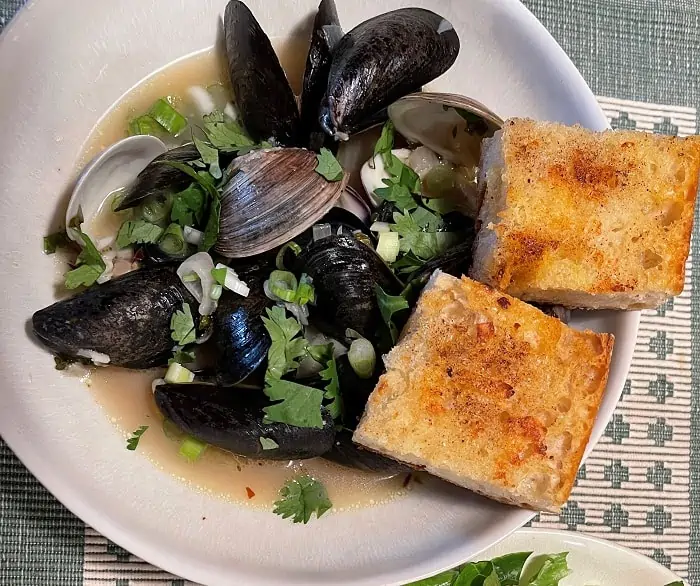
Before heading off to Big Sur, take a quiet walk on the beach at the end of Ocean Avenue in Carmel in the morning. Then stop by the Carmel Bakery & Coffee House for excellent European pastries, scones, and crazy good cannolis. By the way, this is Carmel’s oldest-running retail business, serving the public since 1899!
Day 2: Carmel to Lompoc On The Coast Highway 190 Miles
Views, views, and more views that’s the lure of this section of the highway. Big Sur is a high point on California Route 1, both figuratively and literally. The road here is often several hundred feet above the ocean.
Driving Along The Cliffs of Big Sur On California’s Highway 1
The road from Carmel to Ragged Point is curvy and cliffside. Just about every mile, there is a pull-out. These pull-outs were probably designed for slower cars to allow others to pass, But now they serve as excellent stops for photo ops galore.
The most famous and often photographed point on the highway is Bixby Bridge. The pull-outs for the Bridge are Castle Rock View Point/ Bixby Creek Bridge View Point (at Coast Road), about 18 miles south of Carmel. Keep an eye out for the viewpoint. You don’t want to miss the stop. It’s not easy to turn around and go back, and this is your only chance to photograph this iconic bridge.
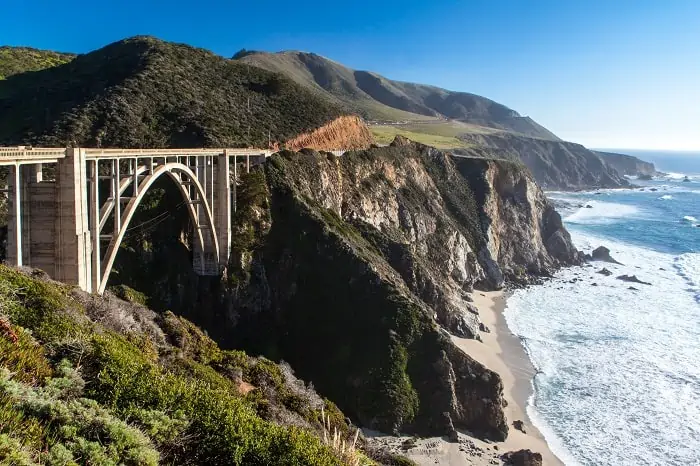
If you have the time, take a couple of hours to lunch at Nepenthe in Big Sur. Sitting perched on the cliffs above the Pacific with the Santa Lucia Mountains behind, this local mecca has been serving travelers and artists for decades.
The menu here is simple and generally unchanging; almost everyone opts for the Famous Ambrosiaburger. My favorite way to start the day (if you are on the road early) is at Café Kevah for luscious eggs benedict. The café is located on the outdoor terrace below Nepenthe.
Either way, don’t miss out on a stop at the Phoenix Shop for a chance to pick up some local art or crafts.
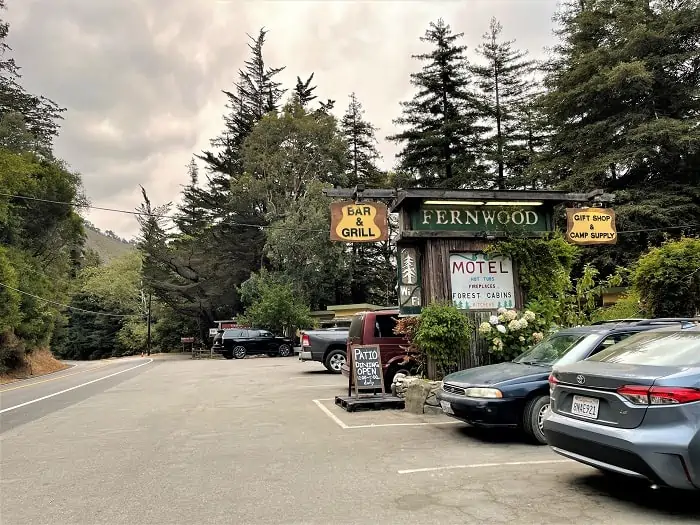
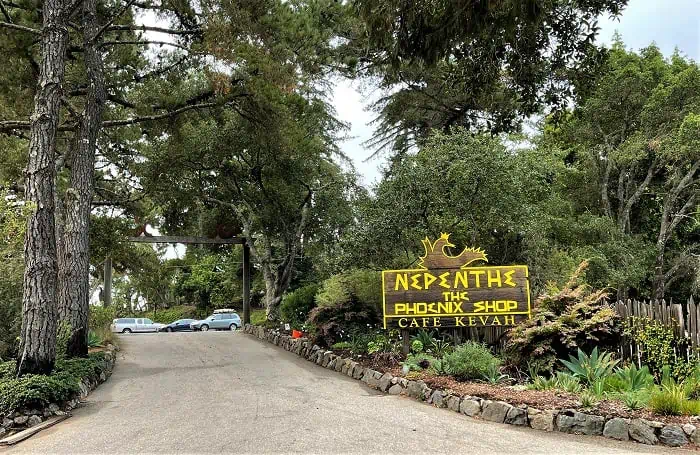
Thinking of staying in Big Sur for a night or two? You have a few very different options. Accommodations here tend to be either a) very basic or b) very high-end. The Big Sur Lodge and Fernwood Resort both offer comfortable rooms in fabulous settings. But if you are looking to splurge truly and want to be on the coast in the most luxurious environment, head for the Post Ranch Inn.
Hiking and Camping in Big Sur
Big Sur is famous for great hiking trails and camping in the redwoods and on the beach. All Trails lists 118 hiking trails in Andrew Molera State Park and another 81 just south in Julia Pfeiffer Burns State Park. Hard as you may try, you won’t run out of places to explore.
At Andrew Molera, there are 22 standard tent sites (allowing 1 car per site) and two hike and bike sites. Each campsite is equipped with a fire pit, picnic table, and food storage container. Trail Camp has potable water and restrooms with flush toilets but no showers.
Julia Pfeiffer Burns only offers two environmental campsites. For RV’rs or larger groups, Pfeiffer Big Sur offers 189 RV and tent sites on or near the Big Sur River.
Reservations are required for all campsites, and it’s recommended you book six months in advance as they fill up quickly. You can make reservations at Reserve California for all parks or call 1-800-444-7275
Elephant Seals And The Famous Hearst Castle
Just before San Simeon, you have another chance to see Elephant Seals. At the south end of Piedras Blanca State, Marine Reserve is the Elephant Seal Vista Point. There is a large parking lot for travelers and viewing areas at the north and south ends of the lot.
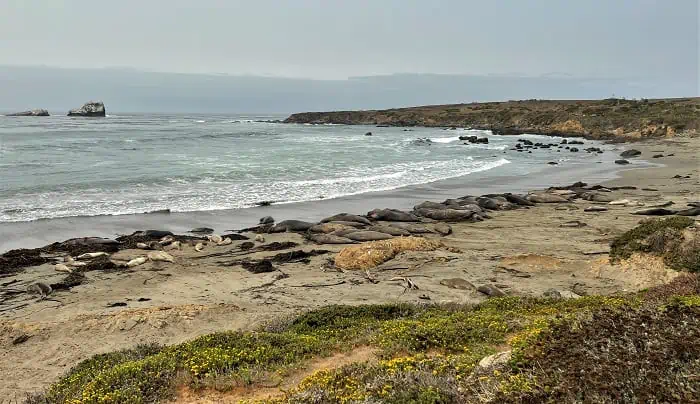
You will smell the seals before you see them, and there is no trail leading to the beach. It would be best if you didn’t try to go down to the beach anyway, as Elephant seals are known for their aggressive behavior. But this is an excellent place to stretch your legs and get that seal photo for Instagram.
Hearst Castle: The Historic Estate of Willaim Randolph Hearst
San Simeon is the turnoff for Hearst Castle. Now a state park, this magnificent mansion is a significant stop on your road trip on California Highway 1.
Famed architect Julia Morgan collaborated with William Randolph Hearst (Congressman and Media Magnate) for over 28 years to build his dream home. A castle to rival the large manor homes of Europe. This is the home where Hearst entertained the elite of the day. Hollywood celebrities, notable politicians, and sports figures were all guests at Hearst Castle.
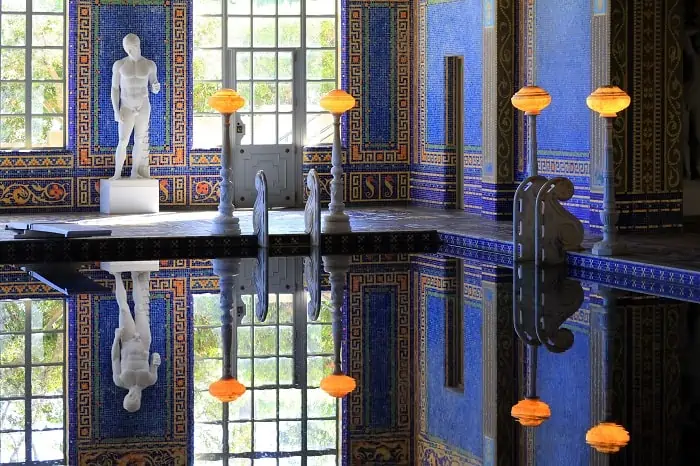
The buildings on-site total over 80,000 square feet and contain 58 bedrooms and 60 bathrooms! And the Neptune Pool holds 345,000 gallons of water! If the splendor of the architecture and furnishings aren’t enough, the “home” also has numerous artworks collected by Hearst throughout his travels.
There are several tours at Hearst Castle to choose from. Your only problem will be deciding what to see. If you plan the road trip on California Highway 1, set aside at least half a day to see the castle.
Usually, we would end our day after Hearst Castle by staying the night in San Luis Obispo, maybe at the Madonna Inn. This is an excellent time to rest and try out some of the legendary Paso Robles Pinot Noir from the grapes kissed by the early morning fog on the Santa Lucia Mountains.
Time For Movie History On Our Road Trip On California Highway 1
If you are not up for Hearst Castle, a bit further south are the Guadalupe-Nipomo Dunes. This area gives off an otherworldly vibe, existing today as a wildlife refuge, an off-road recreation area, and a natural preserve. You won’t see a landscape like this anywhere else on the west coast.
The Dunes made their mark on movie history when Cecil B. DeMille used the site for the set of “The Ten Commandments” in 1923. When filming was done, the scenes were dismantled and buried on the site to prevent reuse.
What is so special about Guadalupe-Nipomo Dunes? This park is the most extensive dune system on the California coast, covering an 18-mile stretch. Guadalupe-Nipomo is second only in size to the Imperial San Dunes near Brawley, CA, in the state’s southeastern part.
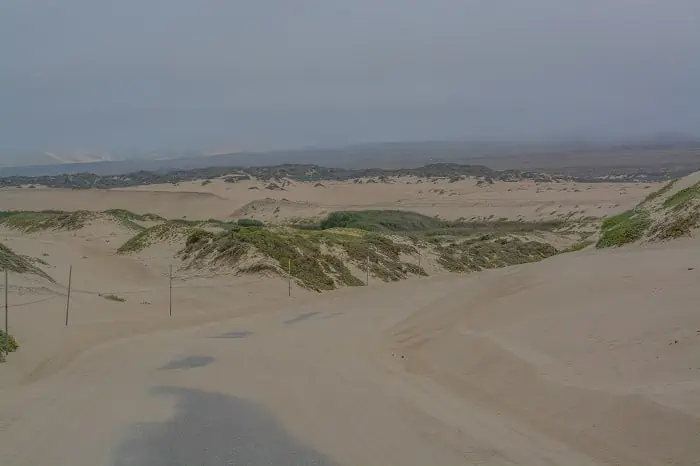
You can view some of the artifacts that have been recovered at the Dunes Center in downtown Guadalupe. The rest of these massive edifices from nearly 100 years ago are still buried out there somewhere in the dunes.
If you go on to the Dunes, a great place to stop for Day 2 is Lompoc. There is not much to the town other than being adjacent to Vandenburg Space Force Base. Ok, who here ever thought we’d actually see “space force” in our military? But there it is right at the entry gates.
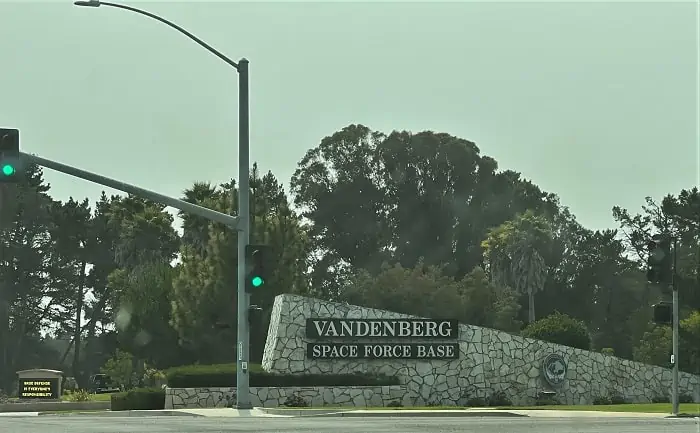
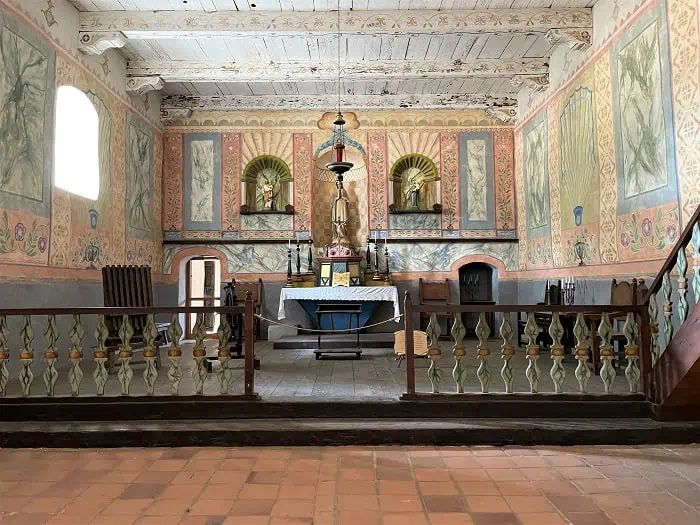
We’re stopping here because I want to see Mission La Purisima Concepcion. 21 Franciscan Missions cross the state from San Diego to Sonoma. When I mark La Purisima off my list, I will have 20 in the bag. Just one left to see. This makes the stop in Lompoc worth it for me.
Day 3 California Highway 1: Lompoc to Los Angeles 153 Miles
The first part of the drive, on the last day of our road trip, has you driving through some rugged scrubby hill country as you wind your way down to Gaviota State Park south of Las Cruces. Here, California 1 joins up with US 101 again. You drive right on the coast for the next few miles until right before Santa Barbara.
Some day, I need to do a City Guide Post on just Santa Barbara. This town is truly a jewel on the Southern California Coast. Suppose you are looking for a long weekend or mini-vacay. With its palm tree-lined streets, gourmet restaurants, beautiful weather, and fantastic beaches and bay, Santa Barbara is an excellent place to visit.
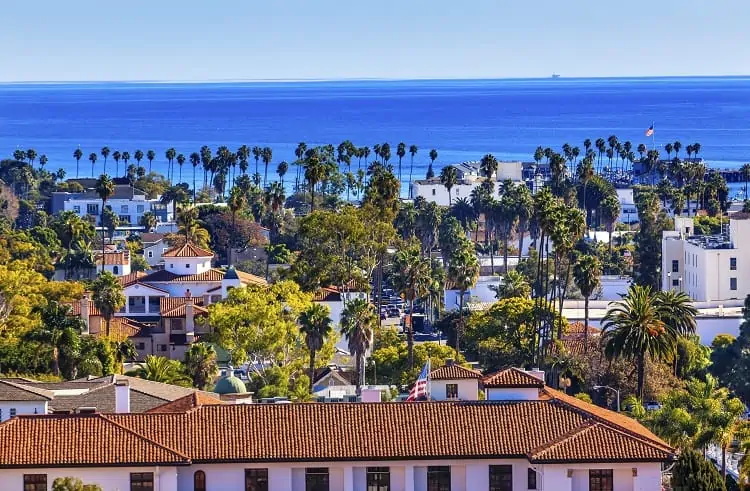
Once past Santa Barbra, you follow the coast as you head down the 101 to Ventura and Oxnard. Off the coast of this stretch of California are the five Islands of Santa Cruz, Anacapa, Santa Rosa, Santa Barbara, and San Miguel that form Channel Islands National Park. This park is a remarkable place to visit.
The Channel Islands support over 2,000 plant and animal species. 145 of these species are found nowhere else in the world. Much like in the Galapagos, the isolation here allows evolution to proceed independently. You will see marine life, from microscopic plankton to the blue whale and archeological resources that span more than 13,000 years of human habitation.
Day trips and overnight camping are available on the Channel Islands. If you don’t have your own boat, ferries leave almost daily for the islands from Ventura and Oxnard harbors.
The turnoff to Oxnard is where you leave the 101 and are back on California 1, and once out of Oxnard, you are finally on what is called in SoCal, the PCH.
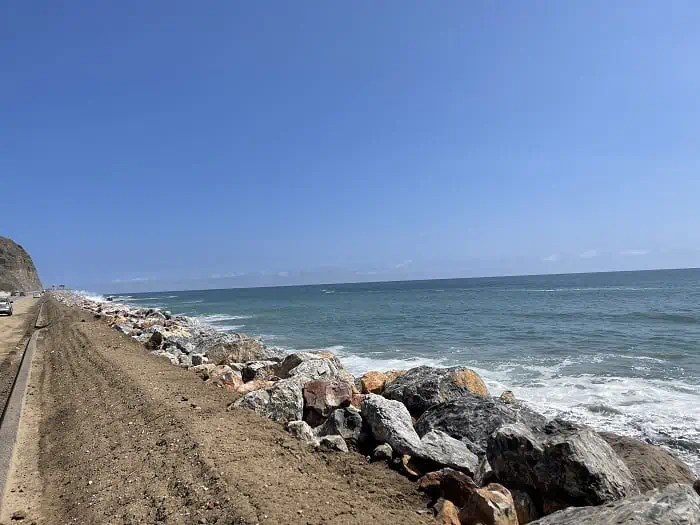
The Final Few Miles on the PCH Road Trip – California Highway 1
These last miles on Highway 1 will take you past some of the most well-known scenery and towns on the route. Sycamore Cove Beach, El Matador Beach, Zuma Beach, Point Dume, and finally Malibu. As you look around, you will know you are in the land of the rich and famous now!
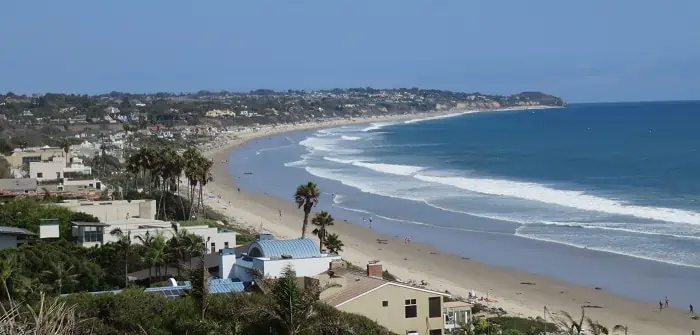
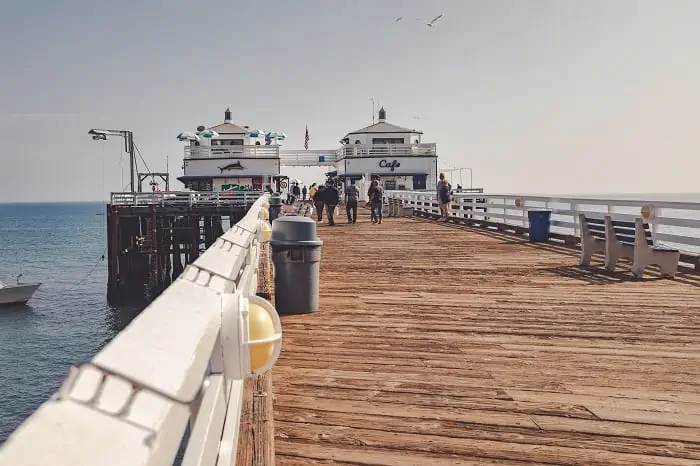
Malibu Pier, with its two white towers, sits adjacent to Surfrider Beach. From here, you can enjoy lunch at the Malibu Farm Restaurant and Café while watching the locals surf the waves of the Pacific. And Duke’s of Malibu is undoubtedly a place to catch a glimpse of the movers and shakers while enjoying a little Hawaii Pacific dining.
If you really want to see a grand home and you didn’t get to visit Hearst Castle, here is your next opportunity – The Getty Villa in Malibu. The cool thing here is that admission is free, but you do need to reserve a time for entry.
The Getty website calls the Villa Museum “A one-of-a-kind destination offering ancient Greek and Roman art, tranquil gardens, and ocean breezes.“ This fantastic museum sits on the edge of Pacific Palisades on a hill overlooking the Malibu coastline.
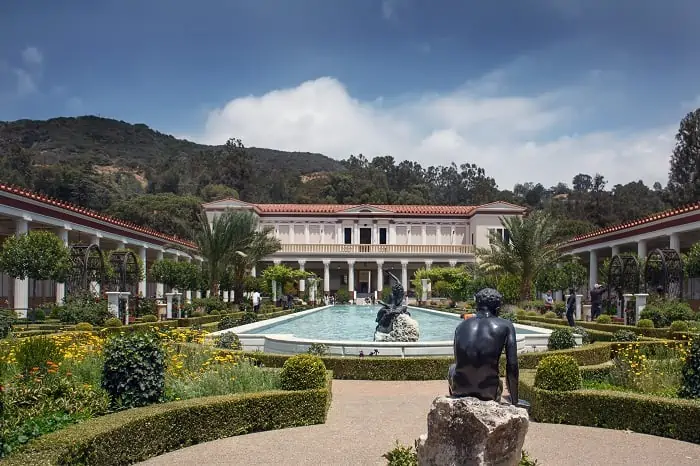
Unlike Hearst Castle, the villa was never meant to be lived in. J. Paul Getty built the villa on land next to his home because he ran out of room in his initial gallery for his art.
Lastly, you know you’ve made it to LA when you reach the Santa Monica Pier and see the sign for the end of the road on Route 66.
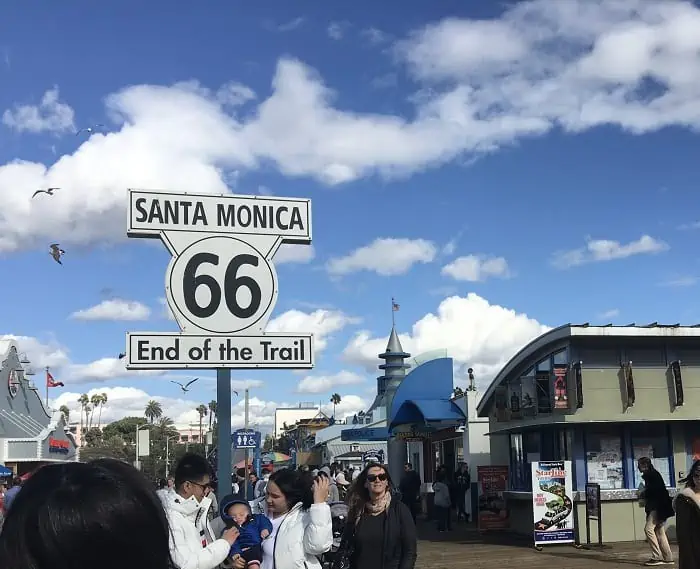
Next Time You Drive Between SF And LA, Make It A Road Trip On California Highway 1!
From my home just east of San Francisco to the center of Los Angeles, this road trip on California Highway 1 totaled up to 509 miles. Splitting the drive across three days allowed us to stop at some terrific sites along the way.
There are nearly 30 recommendations in this article of the great sites, venues, museums, and parks on California Highway 1, and I barely scratched the surface. It’s easy to see why a road trip on California Highway 1 is recommended time and time again.
Frequently Asked Questions About A Road Trip on California Highway 1
- Is There A Difference Between The Pacific Coast Highway (the PCH) and California Highway 1?
In southern California, you often hear the coast highway referred to as “the PCH” (short for Pacific Coast Highway). You won’t hear that term in northern California or, in fact, much further north than Malibu. It’s the same highway, but the term PCH is only for the part of the highway in SoCal.
You will also hear this highway referred to as the Cabrillo Highway, Shoreline Highway, the Coast Highway, and in the Bay Area as just 1. Since the 1964 state highway renumbering plan, this entire stretch of highway, covering nearly 656 miles, has been designated as California State Route 1.
- Do You Need To Plan Your Road Trip On California Highway 1
It’s fun to be spontaneous, jump in the car, and head on down the road. For a day trip to the beach, lake, or mountains, that probably works. But especially for your first long drive on the California Coast, you are going to want to make a plan.
Before heading out, always check for road closures or traffic restrictions on the Caltrans website or call 1-800-427-7623. CA 1 is beautiful because it runs along the coast and mountains. But most of the road is just two lanes. Frequently, large portions of the road are closed due to landslides or just needed repairs.
Once you know the road is all good to go, you need to decide what type of road trip you want to have. Are you looking for an “urban-ish” trip with sightseeing stops in Monterey/Carmel, etc., or a more active camping, hiking, and nature trip? There are so many fun towns, state parks, beaches, wineries, and adventures you can do either. And if you have enough time, you can do both. But it’s good to have a plan.
- North to South or South to North on California 1?
I get asked all the time if it’s better to make this trip from north to south or vice versa. Either way, it’s a fantastic drive, but I like to drive from north to south on the west coast. This way, I am driving on the side of the road closest to the water.
Most of the places you will want to pull off and see on California Highway 1 between San Francisco and Los Angeles are on the west side of the highway. When you are also on the west side of the road, pulling on and off to go into a town or to get that perfect ocean cliff photo is much easier.
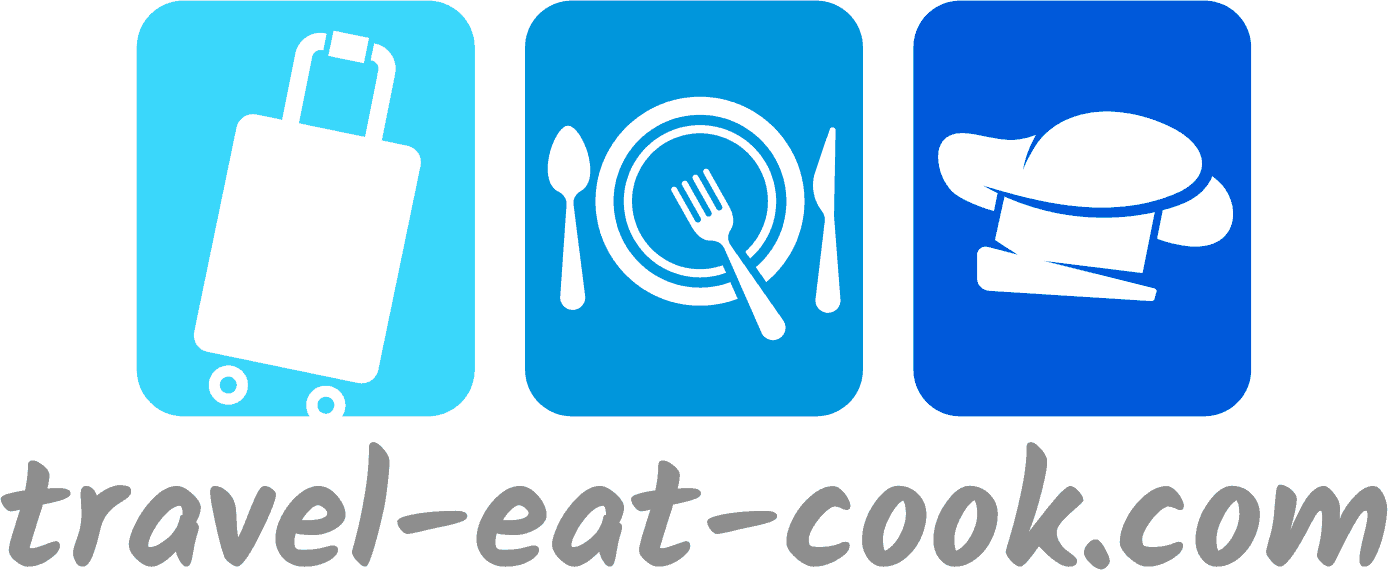
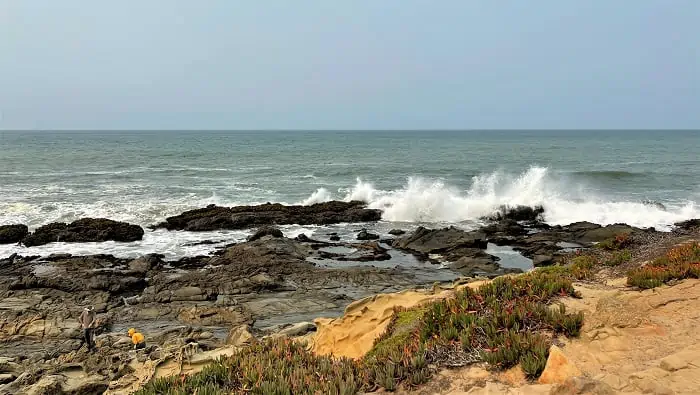
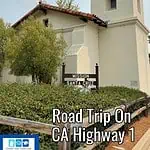
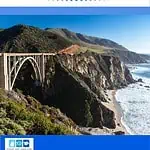
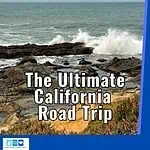
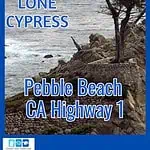
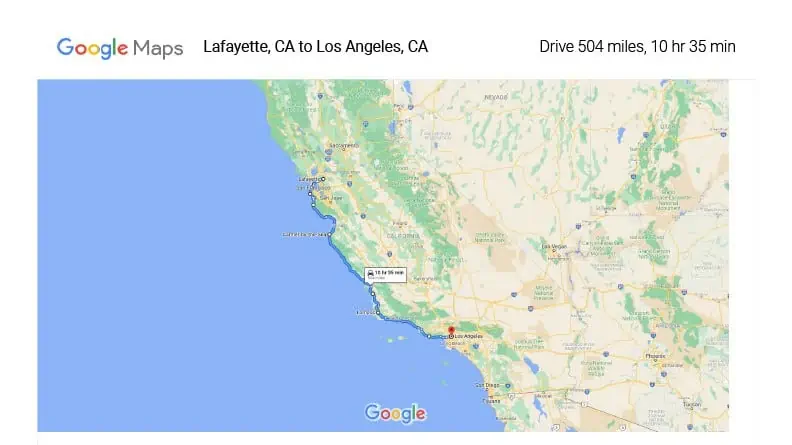
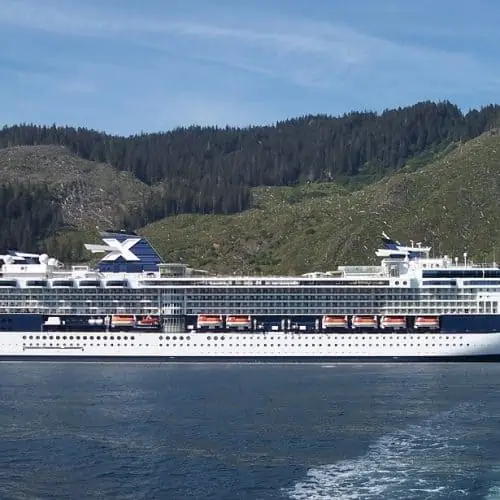
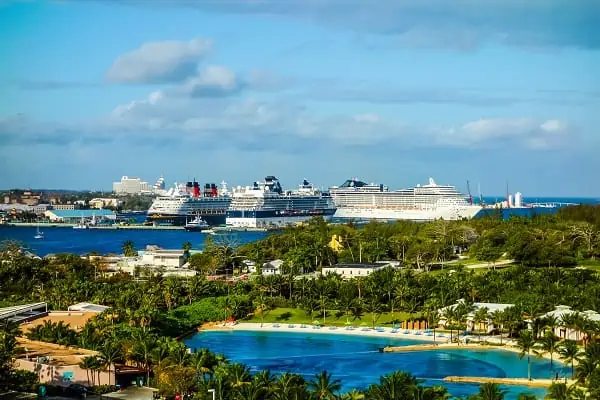

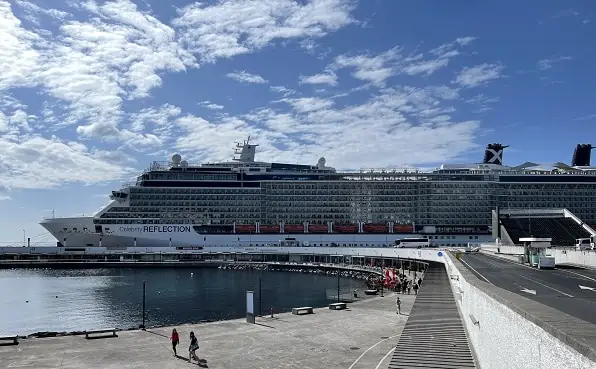
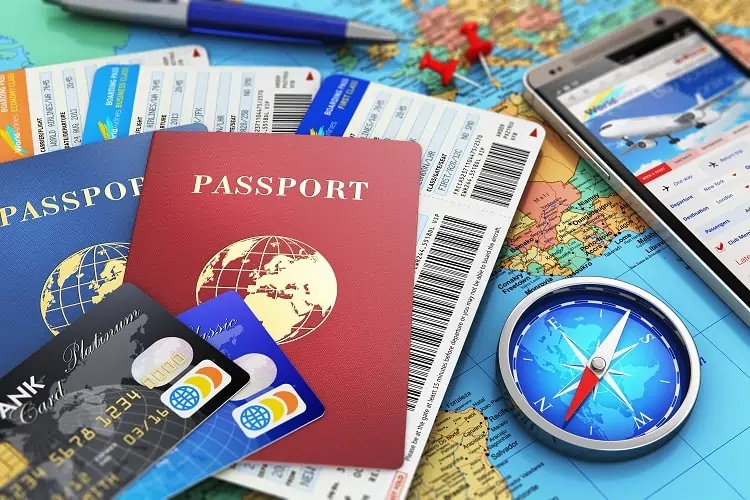
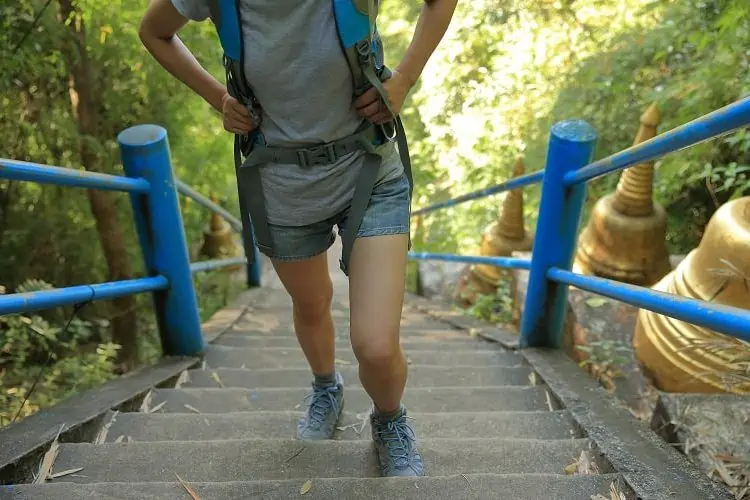
3 Comments